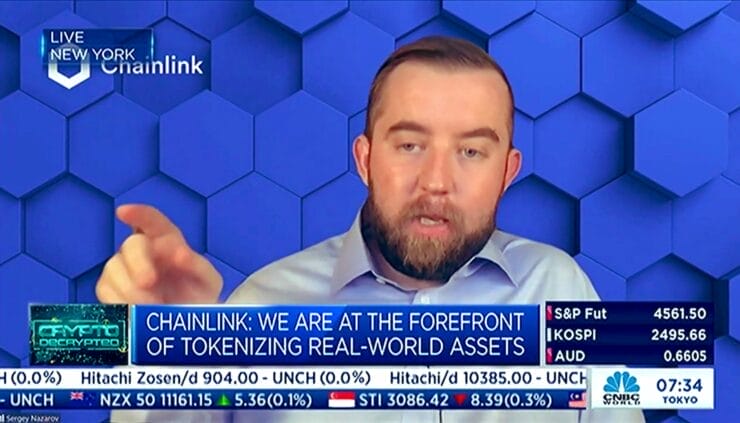Following the publication of Swift’s proof of concept demonstrating how global financial institutions can transact with multiple blockchains using Chainlink’s Cross-Chain Interoperability Protocol (CCIP), representatives from top banks gathered at SmartCon 2023 to envision the future of onchain finance and CCIP-powered tokenized real-world assets (RWAs).
During a recent appearance on CNBC Asia, Chainlink co-founder Sergey Nazarov highlighted some of the important use cases already integrating CCIP to power RWAs across different industries, forming what Nazarov envisions will ultimately become a global internet of contracts.
One recent proof of concept launched by Vodafone, a leading telecommunications company in Europe and Africa, demonstrated how trading companies could avoid unnecessary delays by using CCIP to seamlessly transfer digital cargo receipts between multiple parties across different chains.
“That use case actually showed that you can codify certain key parts of trade finance into a deterministic, guaranteed form on a blockchain and smart contracts,” Nazarov explained.
“What it showed is that blockchains, smart contracts, and oracle networks are applicable even beyond capital markets and DeFi; they’re applicable to global trade. My expectation is that you’ll see blockchains and smart contracts be applied to gaming, ad networks, global trade, concert tickets – basically anything and everything where digital value has to move between counterparties.”
Another CCIP-powered use case involves green tokenized assets created by ANZ, one of the largest institutional banks in Australia. During a fireside chat with Nazarov at Sibos, ANZ Banking Services Lead Nigel Dobson highlighted the demand for green RWAs that can be bought and sold on different chains using different digital currencies.
“Our work with ANZ is a very good example of how more advanced banks that are farther along in their technical adoption of blockchains can achieve large amounts of efficiencies and a lot of programmable interaction between the assets that come out of their banks and other assets,” Nazarov explained.
He shared his vision of “tokenization 2.0,” where such use cases ultimately culminate in the global adoption of tokenized RWAs.
“It’s really where the majority of the world’s assets will now become tokenized, but in a very practical form,” he said. “We won’t be tokenizing ideas about general concepts; we’ll be tokenizing real estate and carbon credits and insurance cash flows, and then making them accessible through stablecoin purchases, which are another type of real-world asset that’s connected to real deposits.”


